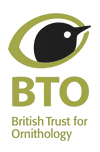
Red Sixty Seven : delivering a love letter to our most vulnerable birds
BTO's Head of Communications, Mike Toms, explains the runaway success of Red Sixty Seven, a project to highlight the UK's most at-risk birds.
While public support for conservation continues to grow, the funding provided by governments has fallen away. Within the UK, public sector spending on biodiversity – expressed as a proportion of GDP – has fallen by 42% since 2008/09. Conservationists therefore have to prioritise where their limited funds should be spent, typically directing resources to either the best places for nature of the species most in need of our help. The identification of places and species is made possible by monitoring data, much of it collected by organisations like BTO.
 Golden Oriole, by Will Rose
Golden Oriole, by Will Rose
Identifying the species in need
The standard global approach to identifying species in need is to assess their risk of extinction (the IUCN's Red List approach). For UK birds, however, we consider a broader range of issues and use these to assign each species to one of three Birds of Conservation Concern (BoCC) categories, based on strict criteria. These relate to whether or not the species is listed as 'Globally Threatened' on the IUCN Red List; whether there has been an historical decline in the breeding population; a more recent decline in the breeding population; a decline in the non-breeding population; a decline in breeding range; or a decline in non-breeding range.
For each of these criteria there are thresholds. If the species meets the 'Red' thresholds then it is placed on the Red List; if not, it might meet lower thresholds and be placed on the Amber List. If a species does not meet any of the thresholds then it is Green-listed. The most recent BoCC review, published in 2015, made for sobering reading, with 67 species on the Red List – just over a quarter of those assessed.
Raising awareness - the Red Sixty Seven book and projectWhile the BoCC provides a focus for conservation practitioners, researchers and policy-makers, it is also important to increase wider engagement with our most at-risk birds. Some Red-listed species are familiar 'garden' or 'farmland' birds, such as House Sparrow, Song Thrush, Lapwing and Yellowhammer, but many people will be unaware of the challenges they face.
Red Sixty Seven set out to address this. The project was the brainchild of Kit Jewitt, who many will know through his online alter-ego @YOLObirder active on Twitter. The concept was simple, a book featuring all 67 Red-listed birds, each illustrated by a different artists and accompanied by a personal story from a diverse collection of writers. In addition to the money raised from book sales, the 67 artworks were auctioned, with all of the project proceeds split between BTO and RSPB to support work on Red-listed birds.
"My hope is that the book will bring the Red List to a wider audience whilst raising funds for the charities working to help the birds most in need." Kit Jewitt
The whole project was made possible because of the generosity of the writers and artists, including Ann Cleeves, Patrick Barkham, Mark Cocker, Darren Woodhead, Carry Akroyd and Derek Robertson, all of whom gave their work for free.
The success of Red Sixty Seven has been staggering, the artworks selling out within just a few hours. The entire first print run sold out in under a month, and two-thirds of the second print run had sold before the books had been delivered by the printer. Importantly, the project has achieved significant reach across social media and in the press, introducing new audiences to these 67 birds and the work being done to conserve them.
The book has been described as '67 love letters to our most vulnerable species' and it is a book of which we are rightly proud.

Dotterel, by Dan Bradbury
